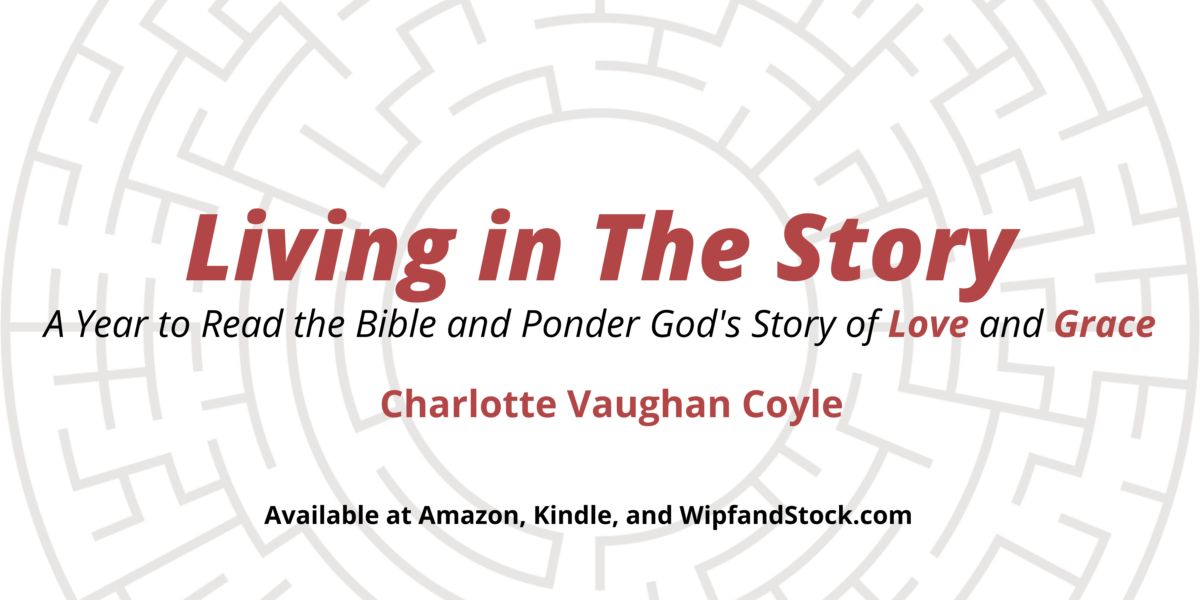David gives us some of our best children’s stories.
- the shepherd boy who used his slingshot to kill a lion and a bear when they attacked his flock;
- the pure hearted youth singing songs of praise and worship with his harp;
- the bold young man facing down a giant and taking him out with a single stone shot from his sling;
- the ignored youngest child who was honored above his seven handsome brothers and anointed to be king of Israel.
Remember the song we sang as children?
One little boy named David. One little babbling brook.
One little boy named David. Five little stones he took.
One little stone went into his sling and sling went round and round.
Round and round and round and round and round
and the giant came tumbling down.
The stories about David in the Hebrew Scriptures sometimes sound like tall tales and there is good reason for that.
The genre of tall tales are usually based in history. Real people and authentic flesh-and-blood figures are lionized as over-the-top heroes. For example, there is another David you may recall, another David of legend.
As a child, I loved singing this David song as well:
Born’d on a mountaintop in Tennessee
Greenest state in the land of the free.
Raised in the woods so he knew every tree,
Kilt him a bear when he was only three.
Davy. Davy Crockett. The king of the wild frontier.
As stories of these actual hero’s lives were told throughout the years, they became larger than life heroes and the legends around them grew. Looking back, it’s not always easy to distinguish the fact from the embellishment.
Our biblical David is so much more than a children’s book character and when we adults read these familiar stories anew as serious students of the Bible, we uncover all sorts of unfamiliar nuance.
As one of the pivotal figures of Israel, David is writ large in 1 and 2 Samuel and in the books of the Chronicles. And he is written with all his deep complexity and puzzling ambiguity.
Walter Brueggemann says the story of David is central to the Jewish texts because David is the pivot of Jewish history. At first these were “no people” and then they were a wandering, homeless people and then they were a loosely knit tribal people.
But it is in David that a new vision emerges: Israel becomes a nation, a united kingdom with a monarch and a city and a land.
It is with David that Israel finds respect among the nations and rest from their enemies. The David Years were, indeed, Israel’s “golden years.”
But there’s another reason why this text is so important to our Jewish cousins: a davidic hope that emerged from the Babylonian Exile.
Some 400 years after David, the last king of David’s line was executed by the Babylonians and many of the people of Israel were marched across the Fertile Crescent as captives and plunder.
Jerusalem was leveled and the Temple was destroyed in 586 BC.
Once again God’s people had no home, no land, no center. And in this crisis, there was a very real possibility that they would once again become “no people.”
It was during this time of Exile that many of the stories and texts of (what we call) the Old Testament were collected and compiled and edited into what eventually became the Hebrew Scripture.
It was during this time of Exile that the biblical writers took the ancient stories that had been such an important part of their oral history and reflected on their meaning for a new time and a vastly changed circumstance.
It was during the time of Exile that Israel began to hope in God’s Messiah, a son of David, to come and liberate them once again.
The Messianic Hope was birthed from the dark womb of Exile.
Even though the dynasty of David would never again look like it did in their golden years, these people of faith and flexibility continued to dig into hope, hold on to faith and stand on the promises.
PHOTO CREDITS
Amazigh shepherd playing the flute mountains of the High Atlas, Morocco Photo of Michel Teulerwww.rgbstock.com
Jerusalem Temple stones: Huge stones hurled down by the Romans during the destruction of the Jewish Temple built by Herod in Jerusalem, Israel; hence about 2,000 years old.



